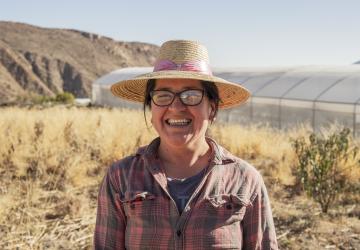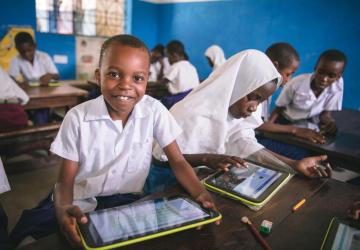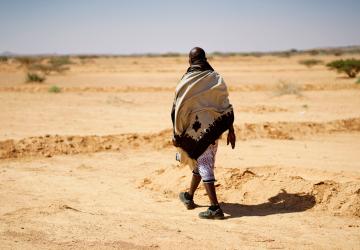Guatemala is Rewriting the Rules of Inclusive Development

120 civil society organizations.
50% led by Indigenous and Ancestral Authorities.
80% increase in participation.
This is how Guatemala is reshaping how development decisions are made—and who gets to make them.
In preparing its 2025 Voluntary National Review (VNR), Guatemala brought an unprecedented level of civic engagement to the table. These aren’t just numbers; they reflect a fundamental shift: development shaped with communities, not just for them.
The VNR is part of each country’s commitment to the High-Level Political Forum (HLPF)—the UN’s global platform where nations report on their progress toward the Sustainable Development Goals (SDGs). It's where governments take stock of what’s working, where gaps remain, and how to fulfill the collective promise to leave no one behind.
Too often, these reviews are technical and top-down. But Guatemala’s approach is different.
“What we are seeing is a real shift toward shared ownership of the SDGs,” said UN Resident Coordinator Miguel Barreto. “This is not just about listening. It’s about building development with the people, not for them.”
Behind the scenes, the UN’s role in coordination
This transformation was supported by the UN. Under the leadership of the Resident Coordinator, the UN Country Team (UNCT) helped shape strategic partnerships, ensure inclusive consultations, and align support with national goals.
In 2024 alone, the UNCT implemented 190 development initiatives, backed by USD 212.8 million in investments—each initiative connected to the 2030 Agenda and local priorities.
But the real impact isn’t in numbers, it’s in lives changed.

From local knowledge to national change
The UN’s efforts at building partnerships are alive in stories like Manuela’s.
An Indigenous woman from Quiché, Manuela lives in the western highlands, a region rich in tradition but historically underserved in health, nutrition, and education. Like many women in her community, she faced deeply rooted barriers. Her transformation began when she joined a community training programme under the Healthy Environments Model, an inter-agency initiative coordinated by the RC’s Office and supported by the European Union, implemented by UN Children's Fund (UNICEF), World Food Programme (WFP), Food and Agriculture Organization (FAO), Pan American Health Organization (PAHO).
Through this culturally relevant, community-driven training, delivered in her native language, K’iche’, Manuela learned about hygiene, nutrition using local products, and the prevention of childhood diseases. By participating in the programme, she gained knowledge, confidence, and the tools to lead.
Today, she visits families with young children, promotes exclusive breastfeeding, and supports integrated health brigades. Her work has improved hygiene and nutrition habits across her community, proving that sustainable change begins at the local level, from one person to another and expands to cover a community.
In Manuela’s words: “I used to think I had nothing to teach. Now I know that what I learn can save a child’s life. And that gives me the strength to keep going.”
This kind of grassroots leadership has a ripple effect. From 2014 to 2022, Guatemala saw a 2.4-point reduction in under-five mortality, along with declines in maternal, neonatal, and adolescent fertility rates. These are the returns on investing in people-powered partnerships.
The Healthy Environments Model, with support from the European Union, has now expanded to all 22 departments of Guatemala. Its impact is far-reaching: rehabilitation of health centres, digital health monitoring tools, field schools, family gardens, and wholistic government response protocols for malnutrition.
Private sector, from donor to development actor
Guatemala’s transformation also involves the private sector, not just writing checks, but co-creating impact. In 2024, the UN and the Comité Coordinador de Asociaciones Agrícolas, Comerciales, Industriales y Financieras (CACIF)—Guatemala’s leading private sector federation—mapped 110 private-sector-led social initiatives. These initiatives reached more than 165,000 people and mobilized USD 35 million in investments, spanning sectors such as education, nutrition, and technical training. By embedding social impact into their business models, businesses are becoming essential partners in advancing sustainable development.
At the same time, the Connecting Business initiative (CBi) supported the integration of companies into national emergency preparedness. CACIF and the Centro para la Acción de la Responsabilidad Social Empresarial en Guatemala (CentraRSE), a leading network for promoting responsible business, joined CBi network to develop joint protocols on disaster resilience and business continuity. This collaboration positions the private sector as a first responder in crises, as well as a long-term development actor.
“The private sector in Guatemala is stepping up—not only with resources, but with vision,” said Resident Coordinator Miguel Barreto. “They are helping us move from fragmented responses to integrated, scalable solutions that benefit entire communities.”

At the HLPF: Not just reporting progress—showing how it’s built
As Guatemala prepares to present its VNR at the 2025 High-Level Political Forum, it’s not just showcasing outcomes. It’s showing how progress happens, from inclusive consultations to grassroots leadership to coordinated delivery across sectors.
At the heart of it all is SDG 17, Partnerships for the Goals, being used as a strategy for progress across the SDGs. “No single actor can solve the challenges we face,” says RC Barreto. “But when governments, civil society, Indigenous leaders, and the private sector work together, we create the kind of momentum that makes the SDGs real for people’s lives.”
At the High-Level Political Forum this year, Guatemala is not just reporting progress, it is showing how progress is built. One partnership at a time.
To read more coordination results from Guatemala, click here.











